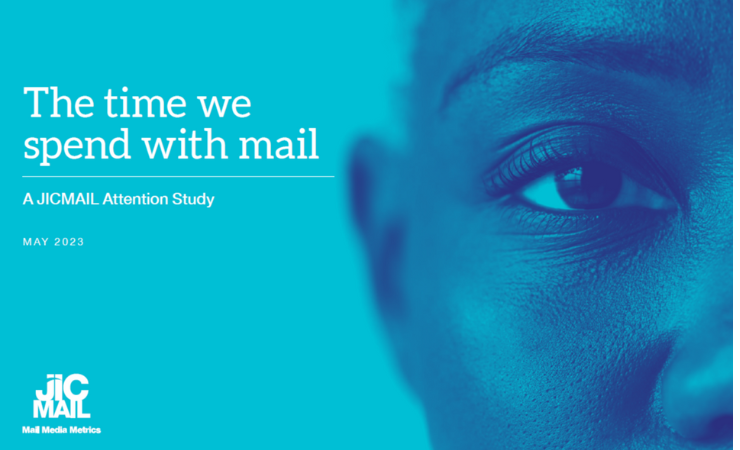Jicmail has released the latest results (Q1 2023) from its panel-based mail planning system. Hot on the heels of this, Jicmail also released the results of a of a year-long study – The Time We Spend With Mail – that quantifies the amount of time consumers spend with their mail.
The Q1 findings revealed that despite another challenging quarter for consumers, a greater proportion of mail was engaged with than at any point in the previous year, and a greater proportion resulted in positive commercial outcomes for advertisers.
Jicmail’s diary-based data captured from a panel of 1000 households every month revealed that in Q1, 95% of mail had some form of physical interaction from consumers other than being immediately thrown away. This suggests that despite continuing high inflation and cost of living concerns, mail remains an effective channel.
In addition, mail open, read and retention rates have experienced year-on-year growth for the third quarter in a row. 75% of mail (including direct mail, business mail and door drops) was read in Q1, 65% was opened, and 46% was still live in the home (i.e. had not been discarded) after 28 days.
Key metrics related to product discovery improved year-on-year, with 16% of mail driving discussions about brands and 6% prompting consumers to search online for more information. When it comes to purchase fulfilment, mail also continued to experience growth in Q1, with 4% of mail prompting a purchase, 2% triggering a voucher redemption and 2% driving store footfall.
Ian Gibbs, director of data leadership and learning commented, ‘Despite stubbornly high levels of inflation, there have been a few rays of sunshine in Q1 with the IPA Bellwether report pointing towards increased advertiser confidence in 2023 and PwC reporting that high street store closures have slowed. Against this backdrop mail continues to be a vital channel in efficiently delivering key messages to consumers when times are tough; and for those advertisers that are active in the channel, they have seen the reward of improved commercial effectiveness throughout the customer journey.’
Mark Cross, engagement director of Jicmail said, ‘The opportunity for practitioners is to appreciate the mindset of their audiences – who in Q1 have yet again demonstrated commercially savvy behaviour as well as high engagement with mail.’
According to The Time We Spend With Mail study, the average piece of direct mail is looked at for 108 seconds across 28 days, while the average door drop is viewed for 46 seconds: the mail channel is more attention efficient than a host of other media platforms.
One of the key conclusions drawn was that mail is a high-attention media channel, which is strongly linked to commercial effectiveness. There is a x2 to x3 multiplier for time spent with commercially effective direct mail items and a x3 to x5 multiplier for door drops.
Using a methodology reviewed by PwC, it costs just £0.07 to generate a minute of consumer attention with door drops and £0.11 for direct mail. Consequently, mail is more attention efficient than social display, digital display and TV advertising according to these results.
Mr Gibbs said of the research, ‘We’re delighted that Jicmail has managed to provide a definitive view on the time spent with mail, plus a whole host of additional insights into the planning factors most strongly linked to high mail attention.’
Mr Cross added, ‘Appreciating that attention is a ‘hot topic’ for all planners, we were determined with this work for mail to find its rightful place in these considerations. The results are nothing sort of stunning, deserving high attention from planners across the disciplines. The journey of mail around the home accumulates un-paralleled levels of largely solus time spent with mail, triggering multiple minutes across the marketing funnel and offers the prospect of a high attention effectiveness multiplier. Rewarding the time spent with mail is now a key planning metric!’





